Hannah R. Goodman's Blog, page 3
July 12, 2019
9 Questions With...Christina Greer
 This week's author is Christina Greer from West Dennis, MA and her young adult novel Everything’s Jake.
This week's author is Christina Greer from West Dennis, MA and her young adult novel Everything’s Jake. 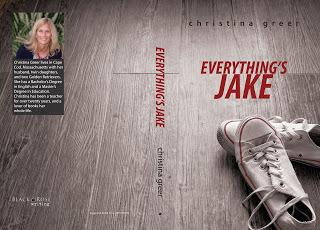
Everything's JakeBy Christina Greer
1. What message are you hoping people will receive when they read your book?
I would like anyone who has ever felt isolated because of mental illness to realize that they are not alone. No one should feel they have to hide or try to ‘normalize’ themselves in order to be accepted.
2. Why did you write this book? This book was born out of experiences from my own life due to having dealt with anxiety much of my adult life. The catalyst though, was when my own fifteen-year-old daughter began showing signs of anxiety, but fiercely denied its existence. Everything’s Jake weaves both of our experiences together and tells the story through the voice of the protagonist, Jake Forest. Being a middle school teacher, I see first hand how many boys are affected by anxieties, yet mental illness is often viewed as something that happens mostly to girls. I wanted my story to be written from a boy’s perspective because I know that many teenage boys are suffering in silence. Navigating through adolescence is difficult enough, so adding issues like anxiety and panic disorders to the mix makes teens feel lost and ashamed. I wrote Everything’s Jakefor anyone who has ever felt as if they needed to hide or change who they are. I want my readers to know that they never have to live their lives ‘off on the sidelines.’
3. What has been the hardest part of the publishing process?Most definitely the promotional side. At times I wonder how I’ll ever sell any copies because this is scary and uncomfortable for me. I wish my words were simply enough, never thought I’d have to become a sales rep of sorts.4. What has been the biggest (pleasant) surprise in your publishing journey?The biggest surprise for me was how many friends wrote me notes of encouragement. Some of these people I haven’t seen since high school, but they’ve written to tell me that they have already pre-ordered a copy! That feels so humbling. I am truly grateful. I hope they aren’t disappointed!5. Give some advice to someone who wants to get a book published.My best advice (that I really wish I’d heeded) is to slow down once you’re ready to query an agent. Write, edit, edit, and edit some more, to put together the tightest possible inquiry letter. Looking back to some of the first query letters I sent out, it’s not surprising that several agents passed without requesting a single page of my manuscript. I know it’s hard to put on the brakes after spending so long crafting your book, but your work deserves it. I’m sure I would have received requests for material, had I put more energy into crafting a better letter. Read tons of samples before you attempt to take on this endeavor! And go to writer’s conferences where agents will be. You can try to pitch your story, or at the very least, make a few contacts so that when you are ready to query, you will automatically have a hook that interests a particular agent/agency.
6. What’s the worst advice you have ever received about publishing?Not sure that I was ever given bad advice. Most people that I’ve met throughout this process have been willing to help.
7. What author or book has influenced your writing?I would have to give credit to the very first author I fell in love with at a very young age - Judy Blume. Her books made me a reader. But the author who has influenced my writing the most would have to be John Green. Looking for Alaska and An Abundance of Katherines profoundly changed the way I viewed writing for teens.
8. What is your philosophy about rejection?Truth be told, growing up I was always a bit of a pessimist, so rejection isn’t easy for me. Luckily, I married an optimist who helped me to shift my thinking. His words, “Every single no, is one step closer to that yes,” have carried me through some tough times. During this book publishing process, his words always helped me get back up and continue searching for that yes.
9. You are stranded on an island with only 3 books. What are their titles?Gotta include mine, Everything’s Jake. Amy Tan’s The Joy Luck Club, and Diana Gabaldon’s Outlander. (There’s no way I could ever truthfully answer this question.)
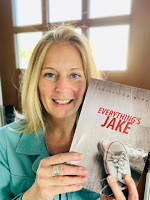
Facebook: https://www.facebook.com/christina.greer.37
Twitter: https://twitter.com/ReadWriteBlue2
Instagram: https://www.instagram.com/christinaagreer/
Goodreads: https://www.goodreads.com/author/show/18900359.Christina_Greer
<!-- /* Font Definitions */ @font-face {font-family:"Cambria Math"; panose-1:2 4 5 3 5 4 6 3 2 4; mso-font-charset:0; mso-generic-font-family:roman; mso-font-pitch:variable; mso-font-signature:3 0 0 0 1 0;} @font-face {font-family:Calibri; panose-1:2 15 5 2 2 2 4 3 2 4; mso-font-charset:0; mso-generic-font-family:swiss; mso-font-pitch:variable; mso-font-signature:-536859905 -1073732485 9 0 511 0;} /* Style Definitions */ p.MsoNormal, li.MsoNormal, div.MsoNormal {mso-style-unhide:no; mso-style-qformat:yes; mso-style-parent:""; margin:0in; margin-bottom:.0001pt; mso-pagination:widow-orphan; font-size:12.0pt; font-family:"Calibri",sans-serif; mso-fareast-font-family:Calibri;} .MsoChpDefault {mso-style-type:export-only; mso-default-props:yes; font-family:"Calibri",sans-serif; mso-ascii-font-family:Calibri; mso-fareast-font-family:Calibri; mso-hansi-font-family:Calibri; mso-bidi-font-family:Calibri;} @page WordSection1 {size:8.5in 11.0in; margin:1.0in 1.0in 1.0in 1.0in; mso-header-margin:.5in; mso-footer-margin:.5in; mso-paper-source:0;} div.WordSection1 {page:WordSection1;} /* List Definitions */ @list l0 {mso-list-id:1409496358; mso-list-template-ids:1005192252;} @list l0:level1 {mso-level-tab-stop:none; mso-level-number-position:left; margin-left:.75in; text-indent:-.25in;} @list l0:level2 {mso-level-number-format:alpha-lower; mso-level-tab-stop:none; mso-level-number-position:left; margin-left:1.25in; text-indent:-.25in;} @list l0:level3 {mso-level-number-format:roman-lower; mso-level-tab-stop:none; mso-level-number-position:right; margin-left:1.75in; text-indent:-9.0pt;} @list l0:level4 {mso-level-tab-stop:none; mso-level-number-position:left; margin-left:2.25in; text-indent:-.25in;} @list l0:level5 {mso-level-number-format:alpha-lower; mso-level-tab-stop:none; mso-level-number-position:left; margin-left:2.75in; text-indent:-.25in;} @list l0:level6 {mso-level-number-format:roman-lower; mso-level-tab-stop:none; mso-level-number-position:right; margin-left:3.25in; text-indent:-9.0pt;} @list l0:level7 {mso-level-tab-stop:none; mso-level-number-position:left; margin-left:3.75in; text-indent:-.25in;} @list l0:level8 {mso-level-number-format:alpha-lower; mso-level-tab-stop:none; mso-level-number-position:left; margin-left:4.25in; text-indent:-.25in;} @list l0:level9 {mso-level-number-format:roman-lower; mso-level-tab-stop:none; mso-level-number-position:right; margin-left:4.75in; text-indent:-9.0pt;} ol {margin-bottom:0in;} ul {margin-bottom:0in;} </style> -->
Published on July 12, 2019 03:30
July 5, 2019
9 Questions with Elle Lewis
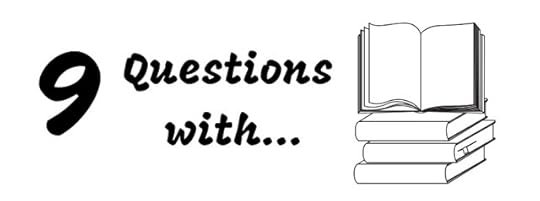 This week's author is Elle Lewis from Orlando, FL, and her novel Dark Touch, book one in The Glass Star Trilogy, a dark urban fantasy, full of action, suspense, and a hint of romance.
This week's author is Elle Lewis from Orlando, FL, and her novel Dark Touch, book one in The Glass Star Trilogy, a dark urban fantasy, full of action, suspense, and a hint of romance.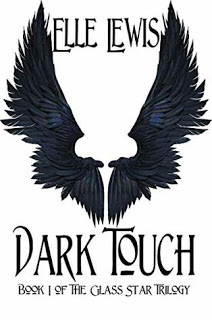 Dark TouchBy Elle Lewis
Dark TouchBy Elle Lewis1. What message are you hoping people will receive when they read your book? Dark Touch is a Fantasy, and it has a lot of action and supernatural elements. But it is at heart a very human story. The message that I would like readers to take away is your past does not define your future. We all have the capability to change our stars.2. Why did you write this book? I have an overactive imagination and a deep love of science fiction/fantasy. And I'm absolutely in love with monsters. I'm a huge fan of the classics- vampires, werewolves, zombies, etc. But for this book, I wanted to create a new big bad. Dark Touch features new supernatural creatures and original lore. It has been so fun to let my imagination soar but also incorporate some deeper stuff that is close to my heart. 3. What has been the hardest part of the publishing process? Balancing time. It's something that always seems like its in short supply. It’s a good problem to have, trying to edit, write, promote, etc. But I wish I could create an extra day in the week! 4. What has been the biggest (pleasant) surprise in your publishing journey? Two things. The first would be finally having feedback and being able to read reviews. Creating new supernatural beings is risky and I was concerned with how they would be received. So, it's wonderful to get feedback and hear readers reactions to what they are. And the second wonderful surprise is the relationships I've developed with my fellow BRW authors. It's so cool to swap our work and chat about the writing process. 5. Would you write a sequel to your book? Why or why not? Why yes, I would! And it is currently in the works. Genesis Rising is the sequel to Dark Touch and I'm working hard on it as often as I can. 6. What author or book has influenced your writing?C.S. Lewis introduced me to the world of Fantasy. As well as Tolkien. They are like family to me and have had huge influences on my writing and in my personal life. Recently, I would have to say Martha Wells. She wrote a science fiction novella series that I immediately fell in love with. And her writing is stunning. Her ability to world build is truly inspiring.7. You are stranded on an island with only 3 books. What are their titles? I'm totally going to cheat and assume this includes book series, lol! The Lord of the Rings, The Harry Potter series, and The Murderbot diaries (swoon).8. What is your philosophy about rejection? Ah, rejection, the best friend of an author. My philosophy is – the writing industry is part of the entertainment industry, and it really requires some thick skin. Not everyone is going to like your book. And that's ok. To be honest, I find humor in some of the more vehement one-star book reviews that I've received. I can't help it, they crack me up, sometimes to the point of tears. Because a book is just this small little thing you know? It takes up like, what? An inch on a bookshelf. Maybe less? And people get mad and go on a mean-spirited rant. I can't help it, it's funny. I just want to pat them on the head and be like, "shhh it's okay. It's just a book, it can't hurt you."
9. Do you have a day job? What is it? I am a cardiac nurse, specializing in procedures.
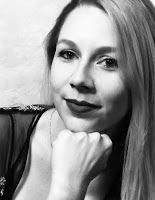
Facebook Elle Lewis@glass.star.trilogy Twitter ELewis@Elle_Lewis2IG elleleis5Blog: https://authorellelewis.blogspot.com/
<!-- /* Font Definitions */ @font-face {font-family:"Cambria Math"; panose-1:2 4 5 3 5 4 6 3 2 4; mso-font-charset:0; mso-generic-font-family:roman; mso-font-pitch:variable; mso-font-signature:-536870145 1107305727 0 0 415 0;} @font-face {font-family:Calibri; panose-1:2 15 5 2 2 2 4 3 2 4; mso-font-charset:0; mso-generic-font-family:swiss; mso-font-pitch:variable; mso-font-signature:-536859905 -1073732485 9 0 511 0;} /* Style Definitions */ p.MsoNormal, li.MsoNormal, div.MsoNormal {mso-style-unhide:no; mso-style-qformat:yes; mso-style-parent:""; margin:0in; margin-bottom:.0001pt; mso-pagination:widow-orphan; font-size:12.0pt; font-family:"Calibri",sans-serif; mso-ascii-font-family:Calibri; mso-ascii-theme-font:minor-latin; mso-fareast-font-family:Calibri; mso-fareast-theme-font:minor-latin; mso-hansi-font-family:Calibri; mso-hansi-theme-font:minor-latin; mso-bidi-font-family:"Times New Roman"; mso-bidi-theme-font:minor-bidi;} .MsoChpDefault {mso-style-type:export-only; mso-default-props:yes; font-family:"Calibri",sans-serif; mso-ascii-font-family:Calibri; mso-ascii-theme-font:minor-latin; mso-fareast-font-family:Calibri; mso-fareast-theme-font:minor-latin; mso-hansi-font-family:Calibri; mso-hansi-theme-font:minor-latin; mso-bidi-font-family:"Times New Roman"; mso-bidi-theme-font:minor-bidi;} @page WordSection1 {size:8.5in 11.0in; margin:1.0in 1.0in 1.0in 1.0in; mso-header-margin:.5in; mso-footer-margin:.5in; mso-paper-source:0;} div.WordSection1 {page:WordSection1;} </style> -->
Published on July 05, 2019 03:00
June 29, 2019
Musings on Author Events and Why I am Stopping (at least for now)
I went to an author event today that was sponsored by a local author’s association. I took my almost 11 year old with me who was excited to sell books…though anxious about how. “How do I take a credit card? What do I do when they give me a check? What do I say to get them to buy your book?” As we drove over the two bridges that it took to get to the library where the event was taking place, I was peppered with all kinds of questions.
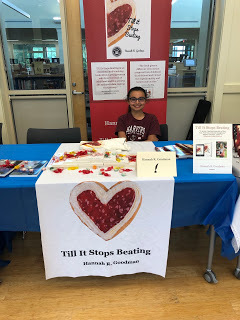
Like most kids who experience firsts, she was super excited. However, I, older and far more experienced with all kinds of firsts, knew that disappointment would be inevitable.
Fast forward three hours later and we are back in the car and she is slumped in her seat, “I can’t believe we didn’t sell one book, Mom.”
Well, I could.
I knew it the minute I walked into the event. The major tell was that we were all put into a room off the lobby entrance of the library. Not a spot where good foot traffic could occur. This means people would have to go out of their way to find us, and when you are a collection of unfamous local authors and it’s a nice summer day, no one is seeking you out in a room off to the side of the library. In my 15 years as an author, this consistently is a sign that no books will be sold.
By the end of the first half hour, I got another major tell when I observed that the youngest patron to stroll through the room was around 70. Not a population that was interested in a fun-loving and sweet YA novel that deals with mental health issues and features jelly doughnuts as its main symbol. In fact, each lovely older person who approached my table was far more interested in the Brach’s hard candy I had strewn around over the piles of books. “May I take one?” They all asked and I would, deadpan, “Only if you buy a book.” While this made them laugh, they all shook their heads and said no. My daughter would then interject in her sweet soft voice, “We’ll give you extra candy if you buy a copy.” Half the time they didn’t hear and just would smile and nod…and take more candy before moving on to another table.
Sadly, this is not the first time that this has happened to me as an author…where you come to the event with a certain amount of books and leave with the exact same amount. Over the last year that I have been marketing my new book that came on out on July 5, 2019, with Black Rose Writing, I attended 8 book signing events and two of those resulted in zero sales. I was supposed to attend far more than 8 events, but I know this road and I decided that unlike how I marketed my previous books, I was going to be selective with what events I chose to do. However, even in my careful screening, over 20 percent of the events I attended resulted in zero sales. (Incidentally, I’ve sold far more online through blog tours, Twitter, Facebook, and Instagram).
The point of sharing this with you, dear blog reader is that after a while, after almost two decades of this life as a self-pubbed-indie-pubbie-traditional-pubbie unfamous author, I’m not doing this type of stuff anymore.
Here’s why: At the end of 2018, a school hosted an event in conjunction with a major bookstore chain where I was invited to be the featured author. Marketing was done as well as proper coordination with the bookstore chain event planner. Yet, when I arrived, the store manager (not the event planner who was mysteriously not there) stuck me in a corner near the self-help nonfiction section (I write YA) at a table the size of my laptop and ignored me for the two hours I was there. I didn’t sell one book and when I left, no one said goodbye.
After that event, I became very leery about doing author events, so as the winter turned to spring and I was invited to attend some more events as a guest author, I went on high alert for any possible signs of trouble. Sure enough, red flags began to wave frantically. No! Stop! This is going to go horribly wrong!
Here are some signs that an author event may not go well:
Red flag: A bookseller agrees to take on your book but doesn’t provide you with any consignment paperwork or indicate a date for a possible signing: Example: A bookseller at a local indie bookstore has held onto a copy of my book for 3 months and counting and has promised to give me a date for a signing…but it’s now just about July and despite my reaching out to her several times, no planning has happened. Maybe it's time to get my book back.
Red flag: You are invited to attend an event as a featured author but zero marketing is done and the event coordinator doesn’t provide you with any details about what the exact event and your role in it is: Example: A well-intentioned librarian several towns over invited me to be a featured author at an event. As the date of the event neared, I saw that no marketing was happening and no one had reached to me about the details of the event (Do I bring my own books? Who will the audience be? Am I hosting a talk? How long is it?). When I inquired about these things, no details were provided. I then did something I would have never considered doing years ago, I backed out. I know the signs of a gig turning out terrible. This is one of those where chances are I will show up to no one, no books will get sold, and no talks will be had.
So given all of this, why, you may ask, did I agree to go to today’s event? Because I didn’t see any glaringly red flags. In fact, based on past events that were hosted by similar folks, this should have gone relatively (as in selling 3-4 books) well.
I know the “Zen” and “enlightened” perspective on author events is: Go to these things for the experience of it, for the connecting with other writers, go because even if you sell one book that’s one more person who will read your work and that’s what really matters—that one reader. Believe it or not, especially as you read my words above, I do ascribe to this Zen perspective and feel that all authors should because it is true that you can go to these events and have one or two nice moments and those moments are important and wonderful.
In fact, today, at the event with my daughter, I sat next to an AWESOME fellow YA author who told me how much she enjoyed reading my book—she compared me to John Green! She was lovely and sweet and really made my day.
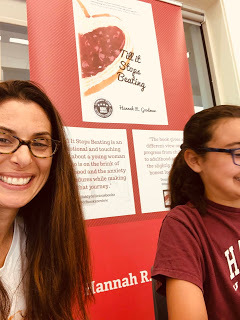
The thing about being Zen or enlightened and HUMAN— is that we can feel two seemingly opposing ways at the same time (it’s a concept in philosophy called a dialectic and it’s also something I use with my psychotherapy clients all the time). So, I do feel good about author events AND bad at the same time. It’s a good feeling to go and even just talk with other writers (like the lovely fellow YA author Angelina Singer) AND it’s a bad feeling to not sell books. Both are true and both can happen at the same time at author events.
And yet, despite the good that comes with the bad, and despite that I understand the “Zen” aspects of author events, I’m in at this point in my life as an author where I have probably attended over a hundred author event/signings and I’ve done everything from signings to talks to panels to expos. And this all doesn’t include the many years I spent teaching writing workshops. What I realize is that attending these things used to be fun, used to feed my creative self, no matter if I sold books or not. But, that is no longer the case. It hurts to go to an event and be ignored or to not sell one book. It hurts to waste an entire day inside and sad when you could be with your children or sitting on your porch.
Watching my daughter through the rearview mirror slumped over and defeated as we pulled out of the parking lot of the library, I asked her how she felt. “I feel bad, mom. I feel bad I couldn’t sell your books.”
I bit my lip and held back my tears, wanting so badly to tell her that it’s all fine and who cares and it doesn’t matter.
But I couldn’t because it does.
After a few more minutes of silence, she said, “But it’s okay. It’s not liked we failed. Sometimes people just don’t want to buy books and sometimes they do. You’re still a writer. It doesn’t matter.”
I smiled at her through the mirror and brushed away my tears. “You’re right, sweetie,” I told her.
And she really is.
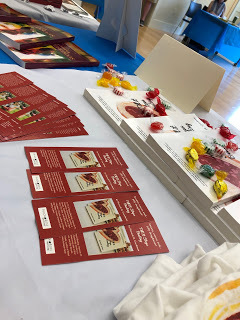
Published on June 29, 2019 19:59
June 28, 2019
9 Questions with Kitty Felde

This week's featured author is Kitty Felde from Los Angeles, CA and her middle-grade mystery book Welcome to Washington, Fina Mendoza.
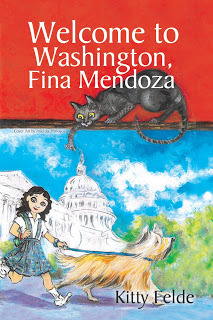
Welcome to Washington, Fina MendozaBy Kitty Felde
1. What message are you hoping people will receive when they read your book?
I hope readers will see members of Congress as real people with real families, but I also want folks to understand how petty partisanship plays out all over Capitol Hill. Even when it comes to picking a church or not laughing at each other’s jokes. I also want to bring DC three thousand miles closer to kids who live in California and never get those field trips to Washington. DC feels remote to Californians, unconnected to our lives. I want to make it real and relevant.
2. Why did you write this book?
I covered Capitol Hill for half a dozen years for public radio. I had marvelous tales to tell of the oddities of life inside the Beltway, but I ran out of dinner parties to tell those stories. The book allowed me to put my observations of DC down on paper.
3. What has been the hardest part of the publishing process?
Finding the right publisher for this book took forever. After the big 5 in NYC said nice things about the writing but rejected the book as “not for them,” I thought hard about who my audience was: folks in DC and kids from the west. I nearly signed with a California publisher, but happily ended up with Black Rose Writing out of Texas.
4. What has been the biggest (pleasant) surprise in your publishing journey?
How much kids LOVE the story of the Demon Cat of Capitol Hill. It’s such a good tale (tail?) - anyone who sees the Demon Cat is cursed with bad luck. She’s a ghostly feline who grows to the size of a mini-bus. Lawmakers who see her lose their elections. Kids who’ve attended my readings want to be almost scared and demand to hear ALL the details about that darned cat.
5. Would you write a sequel to your book? Why or why not?Yes! There are more DC mysteries to be solved. And Fina’s grandmother is finally coming out to help anchor the motherless family. (She was delayed after breaking her leg falling off a barstool at the Indian casino where she plays blackjack.)
6. What author or book has influenced your writing?
Madeleine L’Engle for her guts to write about emotions and family and spirituality; Kerry Greenwood and Alexander McCall Smith for putting memorable characters at the center of their mysteries.
7. You are stranded on an island with only 3 books. What are their titles?
Pride and Prejudice, Skellig by David Almond, and the latest #1 Ladies Detective Agency
8. What is your philosophy about rejection?
Back when I was both a playwright and a freelance journalist, I played a game with myself. When my play was rejected, I told myself that was okay since I was really a journalist. On the days when my news editor yelled at me, I told myself that was okay since I was really a writer. It works.
9. Do you have a day job? What is it?
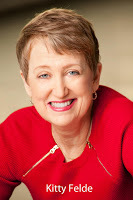 I’m the host/executive producer of the award-winning Book Club for Kids podcast where I talk to middle school readers about books. (Named one of the top 10 podcasts for kids in the world by “The Times” of London.
I’m the host/executive producer of the award-winning Book Club for Kids podcast where I talk to middle school readers about books. (Named one of the top 10 podcasts for kids in the world by “The Times” of London.https://twitter.com/kittyfelde
https://twitter.com/bookclubforkids
https://www.instagram.com/bookclubforkids/
https://www.pinterest.com/sewdc/
Published on June 28, 2019 03:00
June 21, 2019
9 Questions with Ashley Jean

This week's featured author is Ashley Jean Granillo from Los Angeles, CA and her book Love From the Barricade.
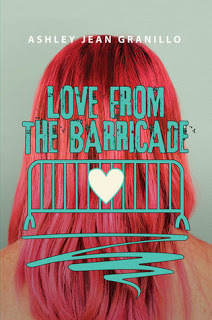
Love from the BarricadeBy Ashley Jean Granillo
1. What message are you hoping people will receive when they read your book?
Although the book is labeled as general fiction, it’s better suited as a new adult novel. In college, most students are exposed to new ideas surrounding feminism, sexuality, and gender studies, but along with those subjects in school, they’re also learning about creating and nurturing relationships. They’re delving into new interests, too. With all of this idea of “new,” it’s very easy to get lost in uncharted waters and feel exposed. As a new adult reader, I want them to understand that their lives and their decisions are malleable, they have the freedom to choose, and they have the options to make things better, especially in male-dominated industries like music. Life is messy, but it doesn’t have to stay that way.
2. Why did you write this book?
I was just beginning my career as a college professor, and all of my college friends were, for lack of a better term, “breaking up” with each other. Our friendships were being called off over boys in bands, and boys not in bands, for a series of misunderstandings and our inability to communicate those feelings of jealousy and insecurity.
For about seven years we’d come together as a result of our adoration of punk rock bands and created so many memories chasing dreams, and appropriately, at a show, while I was alone and my friends were elsewhere acting disinterested what the band had to offer, I realized everyone in my group came together out of circumstance and not love.
Other than Caitlin Moran’s HOW TO WRITE A GIRL, there was no book about the toxic friendships that were birthed out of the music industry, and similarly, how to get over them. I know there are many, many others in my situation and I wanted to provide an optimistic take on it, and also, heal my heart at the same time.
3. What has been the hardest part of the publishing process?
Strangely, getting publishers and agents wasn’t that hard. What is much harder is marketing. I understand this is a very niche sort of book because of its dual timeline and focus on a subculture, so finding the readership for this book has been a challenge.
4. What has been the biggest (pleasant) surprise in your publishing journey?
This goes hand-in-hand with the previous question. When I finally do get a reader, it warms my heart when those that have read it just “get it.”
Recently, one of my readers told me that my work was transformative. That they looked at this industry and their own band obsession in an entirely different light. And through this, I have been able to bond with people I otherwise would have never met before.
5. Would you write a sequel to your book? Why or why not?
Yes! I’ve actually thought about returning to this book to discuss the complexities of long-distance relationships, as well as how our careers shift and shape our adulthood, and the choices we may make in our “mid-life” crisis. While I’ve started an outline, I have yet to write a word. One day!
6. What author or book has influenced your writing?
For a long time, I prided myself on being a fan of Vonnegut and Saunders. A part of me still adores their cynicism and their post-modern form, which is probably why LOVE FROM THE BARRICADE was written in a dual timeline, but I have shifted away from that slightly.
Rainbow Rowell’s FANGIRL inspired and gave me the courage to discuss fanfiction within bandom, and similarly, Latinx women writers like Natalia Sylvester and Erika L. Sanchez, have paved a path to discuss my Mexican heritage in a way that I’ve never explored before––ever.
7. You are stranded on an island with only 3 books. What are their titles?
FANGIRLWHEN LOVE WALKED INLITTLE FIRES EVERYWHERE
8. What is your philosophy about rejection?
Rejection is necessary.
I’ve been rejected in many industries other than writing, academia and the entertainment industry to name a few, and it’s forced me to see my work from different perspectives. Not just as a creator, but as a businesswoman as well.
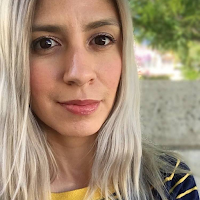 No one is obligated to listen to everything they’re told, but most critiques have large takeaways that can actually improve your work. It also provides a creator with a moment to self-reflect and assesses their creative process as well as their creations. By doing so, you become a much more self-aware and critical human being. 9. Do you have a day job? What is it?
No one is obligated to listen to everything they’re told, but most critiques have large takeaways that can actually improve your work. It also provides a creator with a moment to self-reflect and assesses their creative process as well as their creations. By doing so, you become a much more self-aware and critical human being. 9. Do you have a day job? What is it? I’m an English professor at a local community college. Inside and out, my life is words, and I couldn’t be prouder.
Website: www.ashleyjeangranillo.com Twitter: https://twitter.com/missashleyjean Facebook: https://www.facebook.com/missauthorjean Instagram: https://www.instagram.com/missauthorjean/ Goodreads: https://www.goodreads.com/missashleyjean <!-- /* Font Definitions */ @font-face {font-family:"Cambria Math"; panose-1:2 4 5 3 5 4 6 3 2 4; mso-font-charset:0; mso-generic-font-family:roman; mso-font-pitch:variable; mso-font-signature:-536870145 1107305727 0 0 415 0;} @font-face {font-family:Calibri; panose-1:2 15 5 2 2 2 4 3 2 4; mso-font-charset:0; mso-generic-font-family:swiss; mso-font-pitch:variable; mso-font-signature:-536859905 -1073732485 9 0 511 0;} /* Style Definitions */ p.MsoNormal, li.MsoNormal, div.MsoNormal {mso-style-unhide:no; mso-style-qformat:yes; mso-style-parent:""; margin:0in; margin-bottom:.0001pt; mso-pagination:widow-orphan; font-size:12.0pt; font-family:"Calibri",sans-serif; mso-fareast-font-family:Calibri;} .MsoChpDefault {mso-style-type:export-only; mso-default-props:yes; font-family:"Calibri",sans-serif; mso-ascii-font-family:Calibri; mso-fareast-font-family:Calibri; mso-hansi-font-family:Calibri; mso-bidi-font-family:Calibri;} @page WordSection1 {size:8.5in 11.0in; margin:1.0in 1.0in 1.0in 1.0in; mso-header-margin:.5in; mso-footer-margin:.5in; mso-paper-source:0;} div.WordSection1 {page:WordSection1;} </style><br />--><style><!-- /* Font Definitions */ @font-face {font-family:"Cambria Math"; panose-1:2 4 5 3 5 4 6 3 2 4; mso-font-charset:0; mso-generic-font-family:roman; mso-font-pitch:variable; mso-font-signature:-536870145 1107305727 0 0 415 0;} @font-face {font-family:Calibri; panose-1:2 15 5 2 2 2 4 3 2 4; mso-font-charset:0; mso-generic-font-family:swiss; mso-font-pitch:variable; mso-font-signature:-536859905 -1073732485 9 0 511 0;} /* Style Definitions */ p.MsoNormal, li.MsoNormal, div.MsoNormal {mso-style-unhide:no; mso-style-qformat:yes; mso-style-parent:""; margin:0in; margin-bottom:.0001pt; mso-pagination:widow-orphan; font-size:12.0pt; font-family:"Calibri",sans-serif; mso-fareast-font-family:Calibri;} .MsoChpDefault {mso-style-type:export-only; mso-default-props:yes; font-family:"Calibri",sans-serif; mso-ascii-font-family:Calibri; mso-fareast-font-family:Calibri; mso-hansi-font-family:Calibri; mso-bidi-font-family:Calibri;} @page WordSection1 {size:8.5in 11.0in; margin:1.0in 1.0in 1.0in 1.0in; mso-header-margin:.5in; mso-footer-margin:.5in; mso-paper-source:0;} div.WordSection1 {page:WordSection1;} </style>-->
Published on June 21, 2019 03:00
June 14, 2019
9 Questions with Heather Benson
 This week's author is Heather Benson from Pittsburgh, Pennsylvania and her dark fantasy novel Awaken the Demon.
This week's author is Heather Benson from Pittsburgh, Pennsylvania and her dark fantasy novel Awaken the Demon.
Awaken the DemonBy H.N. Benson
1. What message are you hoping people will receive when they read your book?
I hope people will see that life is hard, there are many things that can go wrong or that are hurtful, but that how you live and how you handle those situations are in your control. You can choose to let them destroy you or you can choose to learn from those moments and allow them to make you stronger and better than you used to be. Rosina has to face many things that most people only hear about but she fights every day to be better than what she was handed. She struggles to remain human even though she has a monster whispering in her head. I hope people that struggle with their own monsters can see that there is a choice.
2. Why did you write this book?
I wrote this book because I was looking for a way out of my own hell. I have had to face many things in my life that have made me want to quit, to just lay down and never get up. I know there are others out there that struggle as much as, or more than I do and I want them to know they are not alone. Rosina faces a real monster but to many of us in the real world, those suffering with PTSD, depression, anxiety, etc, their monster is themselves. Their body and mind reject what is normal or pervert their thoughts and feelings and it is an everyday struggle and I want them to have an outlet as I did when writing.
3. What has been the hardest part of the publishing process?
Honestly, putting together all the different requirements for each publisher. Each time I submitted my manuscript, I had to do something different, some wanted just a few chapters, some wanted it to be single-spaced, some needed a query letter, and some needed just a synopsis. If I didn’t know my book inside and out before that, I sure did after.
4. What has been the biggest (pleasant) surprise in your publishing journey?
Just how amazing my publisher is. This is my first time publishing and they helped me with every step.
5. Would you write a sequel to your book? Why or why not?
Yes! I’m actually half-way done with the second installment. I know the story isn’t over yet and I want to share the rest with everyone. And I believe that my characters’ growth and achievements are something that people would look forward to reading about.
6. What author or book has influenced your writing?
I started writing when I was around thirteen years old, nothing fancy or even worth trying to publish, but it was my way of coping with things going on around me. And at that age, I would have to say that I was mostly influenced by J.R.R. Tolkien, I read the Hobbit around that time and fell in love with his stories, and later read the Lord of the Rings trilogy, only increasing my love. Not long after that, I found Anne Rice and her vampire chronicles and they forever changed my love for vampires and reading.
7. You are stranded on an island with only 3 books. What are their titles?
The Vampire Lestat (By Anne Rice)The Dorina Basarab series – Midnight’s Daughter (by Karen Chance)Shifting Shadows (by Patricia Briggs)
8. What is your philosophy about rejection?
I knew I would be rejected, even J.K. Rowling was rejected several times and if she was and still such a success, then I can as well.
9. Do you have a day job? What is it?
Yes, just customer service.

facebook.com/vampyrepanic/@ihieblue13
H_N_Benson@yahoo.com
Published on June 14, 2019 03:00
June 7, 2019
9 Questions with Myrtle Brooks

This week's featured author is Myrtle Brooks from Brooklyn, N.Y. and her literary fantasy-memoir Stories from the Mother Bear.
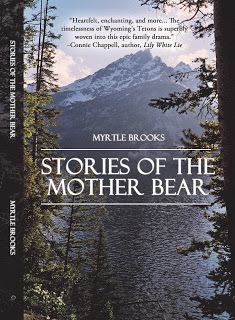
Stories of the Mother BearBy Myrtle Brooks
1. What message are you hoping people will receive when they read your book?I sought to make this a book readers can identify with at least in part or in parts. This is the fictional historical autobiography of a journalist from childhood to old age, filled with joys, triumphs, utter tragedy and failures, with an ever-present backdrop of the Vietnam War, its casualties and its aftermath. Other current events are threaded throughout the main story.It is the story of many families: one, the saga of a family of black cowboy-pioneers who traveled cross-country to settle in Grand Teton before it became a national park. There are mountaineers, scientists and settlers in Jackson, Wyoming. There are the Shoshone and Arapaho nations, driven by force into the Wind River reservation, who are there to this day. All these intersect with the journalist, his wife and family.Throughout the centuries, the same vision recurs: a mother grizzly bear with her three cubs, who appears in Teton and imparts wisdom and empathy; herself creating many more stories. Each time she does, her presence enriches the lives of those she visits: whose journals, diaries and letters are preserved in the attic of a deceased family member of the black cowboys, among the Shoshone and among the Arapaho.Each vision is a message, as is the path of the journalist, Bill Larkin’s, life; and each growth the characters experience a life lesson.
2. Why did you write this book? I had written my first novel, The Geyser Girl of Yellowstone Park, also published by Black Rose Writing. As a reward, my family and I packed up our 1999, road-worthy Dodge Caravan, and we traveled from Brooklyn to spend two nights in Yellowstone Park’s Old Faithful Inn and two more nights in Grand Teton’s Colter Bay cabins. Teton is south of Yellowstone; a small stretch of road connects the two parks.Years ago, when I was 15, I went on a camping trip cross-country with two counselors- husband and wife-and enough teenage kids to fill two Volkswagen buses. I remembered Teton as having been an exquisite place, spending the night outside the tent in a sleeping bag, and not much more.When I returned 43 years later, it was as I described at the end of Chapter 8:
A little ways along the main road after the Teton entrance, I pulled the bus over to the curb, opened the door and emerged to look around me. The passenger’s side door opened soon after, followed by the rear doors, and the family gathered around me. I embraced them all.“What is it, Daddy?” Anna was first to enquire of me.“Did you see the bear?” Susanna tugged at my sleeve.I shook my head slowly. “It’s… that I feel I’ve been here my whole life. As though it’s a place I’ve known for all time.”“Is it because it’s scenic?” Jesse sought me eagerly.“It’s because… I’ve returned home.”
New York City will always be my first home. But there is room in our hearts for second ones. And when I returned home to Brooklyn, I remembered that warm, welcoming embrace and exclaimed: “Just like a big, old mother bear.” Followed by “…That’s it!”
The photos throughout the book and on the book cover are mine from yet another visit.
It took nine years to write and edit this labor of love.In 2015, I returned to spend the night at Colter Bay on a book signing tour for Geyser Girl in the Greater Yellowstone region. Imagine business-commuting through Yellowstone and Teton to bookstores in Jackson, the library in Cody, Wyoming, and Bozeman and Gardiner, Montana! A win-win working vacation.Pushing 63, I found myself wondering how much longer I had on this earth and worrying more than I had in my younger years. And as I spent time among the Teton mountains, lakes and meadows, thinking on this, I got the overwhelming sense of nature’s upward continuation towards life. God’s animals and trees and flowers don’t think on death. They don’t ask how long. They grow, they produce, they serve as our exemplary teachers.This, I have sought to reflect in Stories of the Mother Bear:
February 15, 1918
Dear Diary,
Today, my beloved was buried in the Sacramento City Cemetery, having selflessly given his life for his country. It was only the summer past when he enlisted in the U.S. Army, leaving behind the vineyard in my keeping and that of his older brother, James, from San Francisco.Suddenly, I realize how impregnated the acres of vines and the hewn stone structure housing the winery are with his memory. Torn within beyond all thought, I long to flee from this place and run home to Jackson. But, how can I leave what is so much my own as well, and the more ingrained in our children; which now has become the estate of my beloved?Ellery and Derrick come to me seeking answers of which I possess but little knowledge. I tell them the world is fraught with violence and inhumanity of man against man. They tell me they learned of such things in history class, but that never once could they have imagined their own father being taken from us in that way.I know this:That when my children ask me how we will go on without him, I will take them by the hand and lead them out upon the land. I will show them how, amid the oak tree beyond our property, once luxuriant, now felled by lightning’s cruel blow, the larkspur insist on blooming perennially at the base of its massive trunk. And beside it, the birch and the sycamore neither cease from stretching their branches towards heaven, nor forbear to hug the earth with their roots and take their meat and drink in its season.I will tell them to live and bear the fruits of goodness and kindness; that their lives be enriched, and they, in turn, enrich the lives of others.By this is all manner of evil brought to nothing.
Always, Katy
3. What has been the hardest part of the publishing process?Marketing is undoubtedly the hardest. Editing is all part of the love of it: to me, anyway. But there is much competition out there, and an author must do his/her best to draw attention to his/her work. You must believe in yourself at all times, even when you feel at your worst, and without a doubt believe in your work as reader-worthy.
4. What has been the biggest (pleasant) surprise in your publishing journey?Two equal things:The Mom and Pop bookstores are sheer joy when you do a book signing. They are sweet, hospitable, advertise your coming and will sometimes set a vase of flowers on your table for you to take home. And, too, I had a wonderful CRM in Barnes & Noble, Bronx, now closed (tears), and a terrific manager, both of whom were people of vision who appreciated and welcomed local authors.The other?When a critical, impartial reviewer raves over your book and wants to read the next one.
5. Would you write a sequel to your book? Why or why not?No. I incorporated enough family sagas into this one already. The prime legacies are defined, both spiritual and material, their inheritors, and the whys and wherefores. I would like for the readers to continue the journey themselves.
6. What author or book has influenced your writing?Undoubtedly, The Bible, to which I’m devoted as a believer. And, too, I feel that every well-written book I have ever read from childhood on has leaned itself to my inspiration: good literature never vacates the heart and mind.
7. You are stranded on an island with only 3 books. What are their titles? The Bible, a complete set of Shakespeare’s works, and the old Montgomery Ward’s Atlas a good friend left me as a legacy. (Ummm... hopefully the island is on one of those maps. LOL)
8. What is your philosophy about rejection? I cannot afford to allow rejection to define the path of my life. To stop living my life, to stop writing, to stop doing what I love would be an empty, meaningless existence. I can, however, afford to use rejection to become a stronger, more committed, self-disciplined individual. For the record, though, I have received very kind letters from agents in my lifetime praising my writing capabilities, but stating my work “did not fit.” It served to give me hope; hey, at least they liked it.
9. Do you have a day job? What is it? I am a retired clerk with the United States Postal Service and still an active member and on the Board of Trustees of my labor union. I also enjoy spending my time reaching out to others with encouragement and help whenever I can.
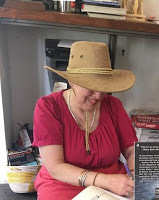
Website: https://www.myrtlebrooks.com Facebook: https://www.facebook.com/Myrtle-Brooks-603381156456666/Twitter: https://twitter.com/JGCityginInstagram: https://www.instagram.com/myrtlebrooksauthor/Pinterest: https://www.pinterest.com/jgcitygin/Goodreads: https://www.goodreads.com/author/show/12620430.Myrtle_Brooks
Published on June 07, 2019 03:00
May 31, 2019
9 Questions with John Vance

This week's featured author is John Vance from Athens, Georgia and his YA adventure novel Tick Cooper.

Tick Cooper By John Vance
1. What message are you hoping people will receive when they read your book? That the trials a young person experiences are transcendent to time and place and that experience dealing with these matters is the true test of courage and goodness regardless of how well one has been taught by others.2. Why did you write this book? I wanted to write a book with a boy as a hero—one that incorporated my love of a historical setting and one that would reflect on issues and challenges still affecting young people today. In addition, I wanted to create characters I remember so delighting me in my own youth—e.g., the worlds of Davy Crockett and Huck Finn. 3. What has been the hardest part of the publishing process? For me, Marketing. My personality does not make me a good salesperson for my own work. I’m not the type to post constantly about my books or to “push” anyone to buy or order. 4. What has been the biggest (pleasant) surprise in your publishing journey? That I have been able to publish novels in several genres—mystery/thriller, Gothic, humorous, & historical and to have been able to indulge further my love of research.5. Give some advice to someone who wants to get a book published. For the Independent Press route: No bragging in the query. Send multiple queries to various presses. Research carefully any offer to publish—check the reputation of the press. Don’t fall for “hybrid” come-ons. 6. What’s the worst advice you have ever received about publishing? Don’t sign any contract unless it provides optimal advantages to the author. Given the difficulties of getting a book accepted by a press, the notion of “If it’s not perfect, then forget it” is utterly unrealistic. 7. What author or book has influenced your writing? As a professor of English Literature, the influences on my fiction are more classical than contemporary. I would point to Charlotte Bronte, Mary Shelley, Charles Dickens, and William Faulkner as the most significant to my writing.8. What is your philosophy about rejection? Move on to the next possibility. Rejection is part of the game. Reasons for a no or a yes are so varied that it does the author no good to assume the characters weren’t interesting enough or the book isn't written well enough as the only reason for the rejection. Consider specific remarks in a critique but move quickly on from such comments as “The characters didn’t inspire” or “The plot failed to engage me throughout.” 9. You are stranded on an island with only 3 books. What are their titles?The Plays of William Shakespeare, Jane Eyre, Frankenstein
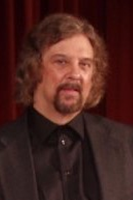 Website:
www.authorjohnvance.com
Website:
www.authorjohnvance.com
Twitter: @victorianvance
Facebook author page: https://www.facebook.com/authorjohnvance<!-- /* Font Definitions */ @font-face {font-family:"Cambria Math"; panose-1:2 4 5 3 5 4 6 3 2 4; mso-font-charset:0; mso-generic-font-family:roman; mso-font-pitch:variable; mso-font-signature:-536870145 1107305727 0 0 415 0;} @font-face {font-family:Calibri; panose-1:2 15 5 2 2 2 4 3 2 4; mso-font-charset:0; mso-generic-font-family:swiss; mso-font-pitch:variable; mso-font-signature:-536859905 -1073732485 9 0 511 0;} /* Style Definitions */ p.MsoNormal, li.MsoNormal, div.MsoNormal {mso-style-unhide:no; mso-style-qformat:yes; mso-style-parent:""; margin:0in; margin-bottom:.0001pt; mso-pagination:widow-orphan; font-size:12.0pt; font-family:"Calibri",sans-serif; mso-ascii-font-family:Calibri; mso-ascii-theme-font:minor-latin; mso-fareast-font-family:Calibri; mso-fareast-theme-font:minor-latin; mso-hansi-font-family:Calibri; mso-hansi-theme-font:minor-latin; mso-bidi-font-family:"Times New Roman"; mso-bidi-theme-font:minor-bidi;} .MsoChpDefault {mso-style-type:export-only; mso-default-props:yes; font-family:"Calibri",sans-serif; mso-ascii-font-family:Calibri; mso-ascii-theme-font:minor-latin; mso-fareast-font-family:Calibri; mso-fareast-theme-font:minor-latin; mso-hansi-font-family:Calibri; mso-hansi-theme-font:minor-latin; mso-bidi-font-family:"Times New Roman"; mso-bidi-theme-font:minor-bidi;} @page WordSection1 {size:8.5in 11.0in; margin:1.0in 1.0in 1.0in 1.0in; mso-header-margin:.5in; mso-footer-margin:.5in; mso-paper-source:0;} div.WordSection1 {page:WordSection1;} </style> --><style><!-- /* Font Definitions */ @font-face {font-family:"Cambria Math"; panose-1:2 4 5 3 5 4 6 3 2 4; mso-font-charset:0; mso-generic-font-family:roman; mso-font-pitch:variable; mso-font-signature:-536870145 1107305727 0 0 415 0;} @font-face {font-family:Calibri; panose-1:2 15 5 2 2 2 4 3 2 4; mso-font-charset:0; mso-generic-font-family:swiss; mso-font-pitch:variable; mso-font-signature:-536859905 -1073732485 9 0 511 0;} /* Style Definitions */ p.MsoNormal, li.MsoNormal, div.MsoNormal {mso-style-unhide:no; mso-style-qformat:yes; mso-style-parent:""; margin:0in; margin-bottom:.0001pt; mso-pagination:widow-orphan; font-size:12.0pt; font-family:"Calibri",sans-serif; mso-ascii-font-family:Calibri; mso-ascii-theme-font:minor-latin; mso-fareast-font-family:Calibri; mso-fareast-theme-font:minor-latin; mso-hansi-font-family:Calibri; mso-hansi-theme-font:minor-latin; mso-bidi-font-family:"Times New Roman"; mso-bidi-theme-font:minor-bidi;} .MsoChpDefault {mso-style-type:export-only; mso-default-props:yes; font-family:"Calibri",sans-serif; mso-ascii-font-family:Calibri; mso-ascii-theme-font:minor-latin; mso-fareast-font-family:Calibri; mso-fareast-theme-font:minor-latin; mso-hansi-font-family:Calibri; mso-hansi-theme-font:minor-latin; mso-bidi-font-family:"Times New Roman"; mso-bidi-theme-font:minor-bidi;} @page WordSection1 {size:8.5in 11.0in; margin:1.0in 1.0in 1.0in 1.0in; mso-header-margin:.5in; mso-footer-margin:.5in; mso-paper-source:0;} div.WordSection1 {page:WordSection1;} </style>--><style><!-- /* Font Definitions */ @font-face {font-family:Wingdings; panose-1:5 0 0 0 0 0 0 0 0 0; mso-font-charset:2; mso-generic-font-family:decorative; mso-font-pitch:variable; mso-font-signature:0 268435456 0 0 -2147483648 0;} @font-face {font-family:"Cambria Math"; panose-1:2 4 5 3 5 4 6 3 2 4; mso-font-charset:0; mso-generic-font-family:roman; mso-font-pitch:variable; mso-font-signature:-536870145 1107305727 0 0 415 0;} @font-face {font-family:Calibri; panose-1:2 15 5 2 2 2 4 3 2 4; mso-font-charset:0; mso-generic-font-family:swiss; mso-font-pitch:variable; mso-font-signature:-536859905 -1073732485 9 0 511 0;} /* Style Definitions */ p.MsoNormal, li.MsoNormal, div.MsoNormal {mso-style-unhide:no; mso-style-qformat:yes; mso-style-parent:""; margin:0in; margin-bottom:.0001pt; mso-pagination:widow-orphan; font-size:12.0pt; font-family:"Calibri",sans-serif; mso-ascii-font-family:Calibri; mso-ascii-theme-font:minor-latin; mso-fareast-font-family:Calibri; mso-fareast-theme-font:minor-latin; mso-hansi-font-family:Calibri; mso-hansi-theme-font:minor-latin; mso-bidi-font-family:"Times New Roman"; mso-bidi-theme-font:minor-bidi;} p.MsoListParagraph, li.MsoListParagraph, div.MsoListParagraph {mso-style-priority:34; mso-style-unhide:no; mso-style-qformat:yes; margin-top:0in; margin-right:0in; margin-bottom:0in; margin-left:.5in; margin-bottom:.0001pt; mso-add-space:auto; mso-pagination:widow-orphan; font-size:12.0pt; font-family:"Calibri",sans-serif; mso-ascii-font-family:Calibri; mso-ascii-theme-font:minor-latin; mso-fareast-font-family:Calibri; mso-fareast-theme-font:minor-latin; mso-hansi-font-family:Calibri; mso-hansi-theme-font:minor-latin; mso-bidi-font-family:"Times New Roman"; mso-bidi-theme-font:minor-bidi;} p.MsoListParagraphCxSpFirst, li.MsoListParagraphCxSpFirst, div.MsoListParagraphCxSpFirst {mso-style-priority:34; mso-style-unhide:no; mso-style-qformat:yes; mso-style-type:export-only; margin-top:0in; margin-right:0in; margin-bottom:0in; margin-left:.5in; margin-bottom:.0001pt; mso-add-space:auto; mso-pagination:widow-orphan; font-size:12.0pt; font-family:"Calibri",sans-serif; mso-ascii-font-family:Calibri; mso-ascii-theme-font:minor-latin; mso-fareast-font-family:Calibri; mso-fareast-theme-font:minor-latin; mso-hansi-font-family:Calibri; mso-hansi-theme-font:minor-latin; mso-bidi-font-family:"Times New Roman"; mso-bidi-theme-font:minor-bidi;} p.MsoListParagraphCxSpMiddle, li.MsoListParagraphCxSpMiddle, div.MsoListParagraphCxSpMiddle {mso-style-priority:34; mso-style-unhide:no; mso-style-qformat:yes; mso-style-type:export-only; margin-top:0in; margin-right:0in; margin-bottom:0in; margin-left:.5in; margin-bottom:.0001pt; mso-add-space:auto; mso-pagination:widow-orphan; font-size:12.0pt; font-family:"Calibri",sans-serif; mso-ascii-font-family:Calibri; mso-ascii-theme-font:minor-latin; mso-fareast-font-family:Calibri; mso-fareast-theme-font:minor-latin; mso-hansi-font-family:Calibri; mso-hansi-theme-font:minor-latin; mso-bidi-font-family:"Times New Roman"; mso-bidi-theme-font:minor-bidi;} p.MsoListParagraphCxSpLast, li.MsoListParagraphCxSpLast, div.MsoListParagraphCxSpLast {mso-style-priority:34; mso-style-unhide:no; mso-style-qformat:yes; mso-style-type:export-only; margin-top:0in; margin-right:0in; margin-bottom:0in; margin-left:.5in; margin-bottom:.0001pt; mso-add-space:auto; mso-pagination:widow-orphan; font-size:12.0pt; font-family:"Calibri",sans-serif; mso-ascii-font-family:Calibri; mso-ascii-theme-font:minor-latin; mso-fareast-font-family:Calibri; mso-fareast-theme-font:minor-latin; mso-hansi-font-family:Calibri; mso-hansi-theme-font:minor-latin; mso-bidi-font-family:"Times New Roman"; mso-bidi-theme-font:minor-bidi;} .MsoChpDefault {mso-style-type:export-only; mso-default-props:yes; font-family:"Calibri",sans-serif; mso-ascii-font-family:Calibri; mso-ascii-theme-font:minor-latin; mso-fareast-font-family:Calibri; mso-fareast-theme-font:minor-latin; mso-hansi-font-family:Calibri; mso-hansi-theme-font:minor-latin; mso-bidi-font-family:"Times New Roman"; mso-bidi-theme-font:minor-bidi;} @page WordSection1 {size:8.5in 11.0in; margin:1.0in 1.0in 1.0in 1.0in; mso-header-margin:.5in; mso-footer-margin:.5in; mso-paper-source:0;} div.WordSection1 {page:WordSection1;} /* List Definitions */ @list l0 {mso-list-id:1708019719; mso-list-type:hybrid; mso-list-template-ids:-370224484 67698703 67698691 67698693 67698689 67698691 67698693 67698689 67698691 67698693;} @list l0:level1 {mso-level-tab-stop:none; mso-level-number-position:left; text-indent:-.25in;} @list l0:level2 {mso-level-number-format:bullet; mso-level-text:o; mso-level-tab-stop:none; mso-level-number-position:left; text-indent:-.25in; font-family:"Courier New";} @list l0:level3 {mso-level-number-format:bullet; mso-level-text:; mso-level-tab-stop:none; mso-level-number-position:left; text-indent:-.25in; font-family:Wingdings;} @list l0:level4 {mso-level-number-format:bullet; mso-level-text:; mso-level-tab-stop:none; mso-level-number-position:left; text-indent:-.25in; font-family:Symbol;} @list l0:level5 {mso-level-number-format:bullet; mso-level-text:o; mso-level-tab-stop:none; mso-level-number-position:left; text-indent:-.25in; font-family:"Courier New";} @list l0:level6 {mso-level-number-format:bullet; mso-level-text:; mso-level-tab-stop:none; mso-level-number-position:left; text-indent:-.25in; font-family:Wingdings;} @list l0:level7 {mso-level-number-format:bullet; mso-level-text:; mso-level-tab-stop:none; mso-level-number-position:left; text-indent:-.25in; font-family:Symbol;} @list l0:level8 {mso-level-number-format:bullet; mso-level-text:o; mso-level-tab-stop:none; mso-level-number-position:left; text-indent:-.25in; font-family:"Courier New";} @list l0:level9 {mso-level-number-format:bullet; mso-level-text:; mso-level-tab-stop:none; mso-level-number-position:left; text-indent:-.25in; font-family:Wingdings;} ol {margin-bottom:0in;} ul {margin-bottom:0in;} </style> -->
Published on May 31, 2019 05:00
May 24, 2019
9 Questions With R.G. Ziemer
This week's featured author is R. G. Ziemer from Warrenville, IL and his paranormal, young adult novel The Ghost of Jamie McVay.
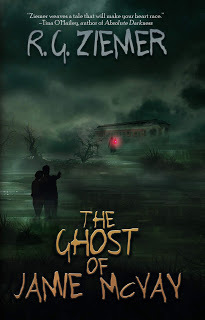
The Ghost of Jamie McVay By R. G. Ziemer
1. What message are you hoping people will receive when they read your book? Understanding the past allows us to move freely into the future, without the ghosts of old sins and ancient history. At least that’s one thing I’d like readers to see in the novel.2. Why did you write this book? First, I had this ghost story on my mind. Then, I wanted to write a book that teenage boys would enjoy, written from a young man’s point of view, and looking at the world the way high school boys might see it.3. What has been the hardest part of the publishing process? The impossible part for me has been attracting the attention of a literary agent. I invested a lot of time and energy into the quest and received almost no response.4. What has been the biggest (pleasant) surprise in your publishing journey? The good news is that there are small presses out there that will consider the work of a new author without agent representation. I was pleased to be published by Black Rose Writing out of Texas.5. Would you write a sequel to your book? Why or why not? I have had a sequel in mind since finishing the first draft. Why not? I’ve created characters that I like and I think they are interesting, the setting is clear and vivid, and the premise has promise for many future ghostly adventures. 6. What author or book has influenced your writing? Modern writers whose work I admire include T.C. Boyle, Annie Proulx, Louise Erdrich.7. You are stranded on an island with only 3 books. What are their titles? Um, is it cheating to say The Complete Works of William Shakespeare? Okay, let’s keep that one and add two I haven’t read yet: Annie Proulx’ “Barkskins” and “LaRose” by Louise Erdrich.8. What is your philosophy about rejection? Move on to the next one!9. Do you have a day job? What is it? I have a small commercial construction company – and I enjoy teaching composition at the nearby community college.
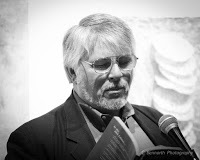
http://rgziemer.com https://www.facebook.com/RaymondZiemer https://www.instagram.com/rgziemer/ rgziemer@comcast.net <!-- /* Font Definitions */ @font-face {font-family:"Cambria Math"; panose-1:2 4 5 3 5 4 6 3 2 4; mso-font-charset:0; mso-generic-font-family:roman; mso-font-pitch:variable; mso-font-signature:-536870145 1107305727 0 0 415 0;} @font-face {font-family:Calibri; panose-1:2 15 5 2 2 2 4 3 2 4; mso-font-charset:0; mso-generic-font-family:swiss; mso-font-pitch:variable; mso-font-signature:-536859905 -1073732485 9 0 511 0;} /* Style Definitions */ p.MsoNormal, li.MsoNormal, div.MsoNormal {mso-style-unhide:no; mso-style-qformat:yes; mso-style-parent:""; margin:0in; margin-bottom:.0001pt; mso-pagination:widow-orphan; font-size:12.0pt; font-family:"Calibri",sans-serif; mso-ascii-font-family:Calibri; mso-ascii-theme-font:minor-latin; mso-fareast-font-family:Calibri; mso-fareast-theme-font:minor-latin; mso-hansi-font-family:Calibri; mso-hansi-theme-font:minor-latin; mso-bidi-font-family:"Times New Roman"; mso-bidi-theme-font:minor-bidi;} a:link, span.MsoHyperlink {mso-style-priority:99; color:#0563C1; mso-themecolor:hyperlink; text-decoration:underline; text-underline:single;} a:visited, span.MsoHyperlinkFollowed {mso-style-noshow:yes; mso-style-priority:99; color:#954F72; mso-themecolor:followedhyperlink; text-decoration:underline; text-underline:single;} p.MsoListParagraph, li.MsoListParagraph, div.MsoListParagraph {mso-style-priority:34; mso-style-unhide:no; mso-style-qformat:yes; margin-top:0in; margin-right:0in; margin-bottom:0in; margin-left:.5in; margin-bottom:.0001pt; mso-add-space:auto; mso-pagination:widow-orphan; font-size:12.0pt; font-family:"Calibri",sans-serif; mso-ascii-font-family:Calibri; mso-ascii-theme-font:minor-latin; mso-fareast-font-family:Calibri; mso-fareast-theme-font:minor-latin; mso-hansi-font-family:Calibri; mso-hansi-theme-font:minor-latin; mso-bidi-font-family:"Times New Roman"; mso-bidi-theme-font:minor-bidi;} p.MsoListParagraphCxSpFirst, li.MsoListParagraphCxSpFirst, div.MsoListParagraphCxSpFirst {mso-style-priority:34; mso-style-unhide:no; mso-style-qformat:yes; mso-style-type:export-only; margin-top:0in; margin-right:0in; margin-bottom:0in; margin-left:.5in; margin-bottom:.0001pt; mso-add-space:auto; mso-pagination:widow-orphan; font-size:12.0pt; font-family:"Calibri",sans-serif; mso-ascii-font-family:Calibri; mso-ascii-theme-font:minor-latin; mso-fareast-font-family:Calibri; mso-fareast-theme-font:minor-latin; mso-hansi-font-family:Calibri; mso-hansi-theme-font:minor-latin; mso-bidi-font-family:"Times New Roman"; mso-bidi-theme-font:minor-bidi;} p.MsoListParagraphCxSpMiddle, li.MsoListParagraphCxSpMiddle, div.MsoListParagraphCxSpMiddle {mso-style-priority:34; mso-style-unhide:no; mso-style-qformat:yes; mso-style-type:export-only; margin-top:0in; margin-right:0in; margin-bottom:0in; margin-left:.5in; margin-bottom:.0001pt; mso-add-space:auto; mso-pagination:widow-orphan; font-size:12.0pt; font-family:"Calibri",sans-serif; mso-ascii-font-family:Calibri; mso-ascii-theme-font:minor-latin; mso-fareast-font-family:Calibri; mso-fareast-theme-font:minor-latin; mso-hansi-font-family:Calibri; mso-hansi-theme-font:minor-latin; mso-bidi-font-family:"Times New Roman"; mso-bidi-theme-font:minor-bidi;} p.MsoListParagraphCxSpLast, li.MsoListParagraphCxSpLast, div.MsoListParagraphCxSpLast {mso-style-priority:34; mso-style-unhide:no; mso-style-qformat:yes; mso-style-type:export-only; margin-top:0in; margin-right:0in; margin-bottom:0in; margin-left:.5in; margin-bottom:.0001pt; mso-add-space:auto; mso-pagination:widow-orphan; font-size:12.0pt; font-family:"Calibri",sans-serif; mso-ascii-font-family:Calibri; mso-ascii-theme-font:minor-latin; mso-fareast-font-family:Calibri; mso-fareast-theme-font:minor-latin; mso-hansi-font-family:Calibri; mso-hansi-theme-font:minor-latin; mso-bidi-font-family:"Times New Roman"; mso-bidi-theme-font:minor-bidi;} .MsoChpDefault {mso-style-type:export-only; mso-default-props:yes; font-family:"Calibri",sans-serif; mso-ascii-font-family:Calibri; mso-ascii-theme-font:minor-latin; mso-fareast-font-family:Calibri; mso-fareast-theme-font:minor-latin; mso-hansi-font-family:Calibri; mso-hansi-theme-font:minor-latin; mso-bidi-font-family:"Times New Roman"; mso-bidi-theme-font:minor-bidi;} @page WordSection1 {size:8.5in 11.0in; margin:1.0in 1.0in 1.0in 1.0in; mso-header-margin:.5in; mso-footer-margin:.5in; mso-paper-source:0;} div.WordSection1 {page:WordSection1;} /* List Definitions */ @list l0 {mso-list-id:1465273155; mso-list-type:hybrid; mso-list-template-ids:502570390 67698703 67698713 67698715 67698703 67698713 67698715 67698703 67698713 67698715;} @list l0:level1 {mso-level-tab-stop:none; mso-level-number-position:left; margin-left:.75in; text-indent:-.25in;} @list l0:level2 {mso-level-number-format:alpha-lower; mso-level-tab-stop:none; mso-level-number-position:left; margin-left:1.25in; text-indent:-.25in;} @list l0:level3 {mso-level-number-format:roman-lower; mso-level-tab-stop:none; mso-level-number-position:right; margin-left:1.75in; text-indent:-9.0pt;} @list l0:level4 {mso-level-tab-stop:none; mso-level-number-position:left; margin-left:2.25in; text-indent:-.25in;} @list l0:level5 {mso-level-number-format:alpha-lower; mso-level-tab-stop:none; mso-level-number-position:left; margin-left:2.75in; text-indent:-.25in;} @list l0:level6 {mso-level-number-format:roman-lower; mso-level-tab-stop:none; mso-level-number-position:right; margin-left:3.25in; text-indent:-9.0pt;} @list l0:level7 {mso-level-tab-stop:none; mso-level-number-position:left; margin-left:3.75in; text-indent:-.25in;} @list l0:level8 {mso-level-number-format:alpha-lower; mso-level-tab-stop:none; mso-level-number-position:left; margin-left:4.25in; text-indent:-.25in;} @list l0:level9 {mso-level-number-format:roman-lower; mso-level-tab-stop:none; mso-level-number-position:right; margin-left:4.75in; text-indent:-9.0pt;} ol {margin-bottom:0in;} ul {margin-bottom:0in;} </style> <br /><br />
Published on May 24, 2019 04:30
May 17, 2019
9 Questions with Phoebe Darqueling
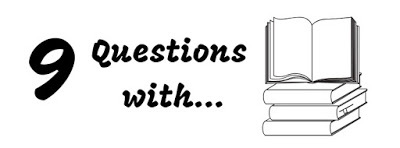
This week’s featured author is Phoebe Darqueling from Freiburg im Breisgau, Baden-Wurttemberg, Germany and her Fantasy/Paranormal book No Rest for the Wicked: Mistress of None Book One.
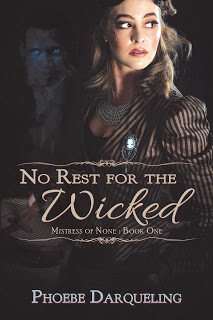
No Rest For The WickedBy Phoebe Darqueling
1. What message are you hoping people will receive when they read your book? If you’ve wronged someone, it’s never too late to try to put things right. You may not succeed, but it’s still worth trying, even if it is just for your own peace of mind.
2. Why did you write this book? I was inspired to create the character of Viola Thorne, a conwoman in the 1870s who can talk to ghosts, after working at the Sacramento History Museum. I was in training to be a tour guide for walking tours around Old Town and we had to create a character and a theme for our own flavor of the tour. After learning about the rough and tumble inhabitants of the mid to late 19th century out in California, I chose the theme “Gamblers, Grifters, and Thieves” and decided my character should be a fake medium. Not long after, I saw a little movie in mind where a woman and a man were setting up their parlor with levers and pulleys to fool their marks, and a real ghost walked in because he’d seen her ad in the paper. This scene doesn’t actually happen in No Rest for the Wicked, but it made the character real for me. I set this book many years after that scene when she’s been doing her best to avoid both ghosts and grifting for a while, but she comes out of retirement to help her friend. I also really wanted to write a book about a woman in her 30s that wasn’t a “finally finding love” romance novel. As a 34-year-old myself who has already packed a lot of experiences into my time on the planet, I knew that people my own age have really rich stories to tell. So many fantasy and sci-fi novels focus on coming of age themes and teenage protagonists, but the older I get, the less those stories interest me. Besides, don’t we “come of” every age? It’s all a process of figuring out who we are now vs. who we have been vs. who we will be no matter whether you are 16 or 116. I liked the idea of writing a character that has become jaded by her life experiences but also can’t seem to ever escape that whole pesky “hope” thing no matter how hard she tries. Older characters have a lot more room for complexity within themselves simply because they’ve had a chance to make decisions and deal with the consequences.
3. What has been the hardest part of the publishing process? When I first conceived the Mistress of None series, I’d planned on a long series of short books more in line with the 19th-century tradition of publishing because it fits with the era of the story itself. When I submitted the original novella, the first publisher told me there wasn’t “enough” for it to feel like a complete story. So, I got a hold of some great resources like Blake Snyder’s Save the Cat! and decided to combine the first two novellas into a single novel instead. This meant more than just a quick copy and paste, I had to do a lot of rewriting to make the two parts hang together thematically, and I added a whole subplot and a new character in a late draft. So a publisher that didn’t even end up publishing my book took the time to give me some really great feedback, but it did lead to a LOT more work. In the end, I am very grateful to her though, and the finished book is much better than the original novellas.
4. What has been the biggest (pleasant) surprise in your publishing journey? When I queried my first novel, Riftmaker, it was rejection after rejection. I had just assumed that this would also be the case with No Rest for the Wicked because that’s just how the industry works. However, it only took about 10 queries to get two offers this time. I feel like that really speaks to how much I’ve grown as a writer in between the two books. (Or maybe my query letters just got way better!) I think it proves true the idea that the best way to become a better writer is to write more.
5. Would you write a sequel to your book? Why or why not? The original story arc covering 12 novellas has been condensed into five novels. I knew from the moment I sat down to write this book that it would be part of a series, and I really love having the kind of long-term lens for planning out the story. Vi is very closed off from sharing with other people and she is the only POV in the book, so her backstory only trickles out here and there when she is either comfortable enough or vulnerable enough to let details slip. Knowing that I can stretch the reader’s experience of discovering who she is over a larger arc makes that process really fun, and I think the air of mystery adds to the intrigue for the reader. I am also considering writing a couple of prequel books about young Vi and her experiences during the Civil War and becoming a conwoman as well. That series would be called “Jill of All Trades,” so together it would a play on the whole “Jack of all trades, master of none” saying.
6. What author or book has influenced your writing? I always credit Neil Gaiman as my biggest influence. The scope of his imagination never ceases to amaze me, but everything about the worlds and characters he creates is also so accessible. In terms of the style of No Rest for the Wicked though, I’d say that I probably owe a lot to how much of Joss Whedon’s TV shows and movies I watch. There’s a cleverness and bouncy quality to all of his dialog that definitely influenced how I wrote Vi and her use of humor to avoid real feelings. He and Gaiman also do an amazing job of interweaving dark narratives with moments of light that I admire.
7. You are stranded on an island with only 3 books. What are their titles? The Princess Bride, American Gods, and Hogfather
8. What is your philosophy about rejection? This is more of my general philosophy about life, but I think it applies. The only way to guarantee failure is never to try. So try. The worst thing that happens is you end up where you started, which is exactly where you’d be if you did nothing.
9. Do you have a day job? What is it? It’s not a day job so much as a seasonal job. My mom started a creativity competition for kids in grades 5-8 back when I was just a little bundle of joy. Nowadays, my brother, sister-in-law, and I run it together between Oct. I do all of the curriculum writing, he does the layout because of his experience working on newspapers, and she does the proofreading and communicating with parents and coaches. Writing for the program is totally different from writing fiction and has its own unique challenges. For instance, there are five competitions per year. Each one requires a set of three 10-minute problems. Trying to figure out how to create something that can be done in that timeframe but is also sufficiently fun and challenging for the kids is a real balancing act. Plus, it has to be easy for the volunteers running each event to score. Another part of the competition is that they have to put on a short play based on a prompt I create. I have a lot of fun coming up with those! I also take on editing academic papers for non-native English speakers sometimes. I lived in Sofia, Bulgaria for a year and taught English as a foreign language and I edit fiction as well, so it is a natural fit for me. After I finish this interview, I’ll be heading off to finish revising a chapter on the Parthian Empire. (Don’t worry, I’d never heard of it either before starting this assignment…)
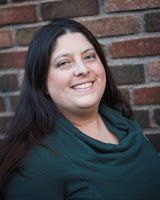
Author Website: https://www.phoebedarqueling.comSteampunk Website: https://SteampunkJournal.org Facebook author page: https://www.facebook.com/AuthorPhoebeDarqueling/ Facebook fan group: https://www.facebook.com/groups/PhoebeDarquelingFans/ Instagram: https://www.instagram.com/phoebedarqueling/ Twitter: https://twitter.com/GearTurns Amazon author page: https://www.amazon.com/Phoebe-Darqueling/e/B072853PG4/
Goodreads: https://www.goodreads.com/author/show/16821631.Phoebe_Darqueling
Published on May 17, 2019 05:30



